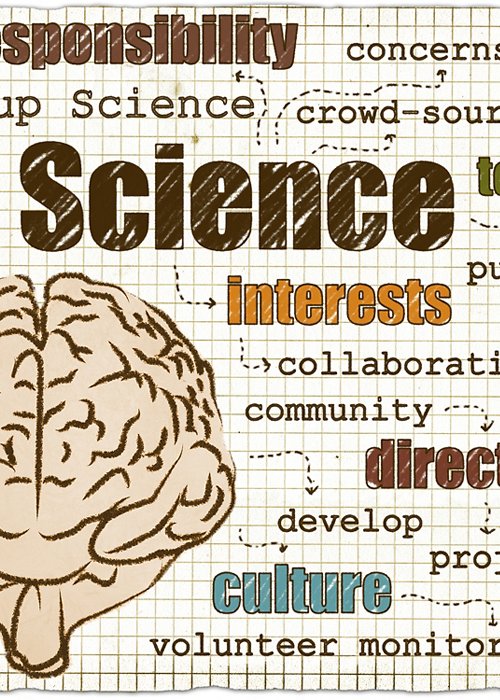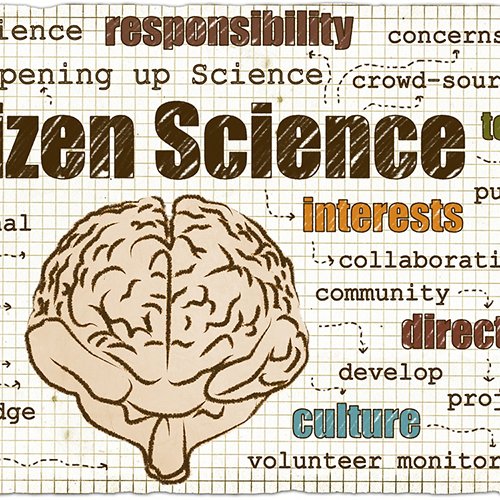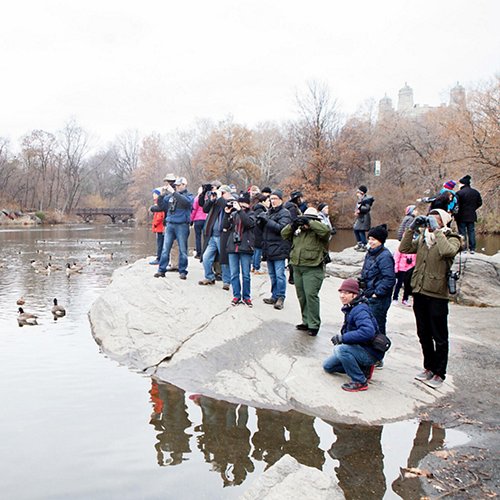When we think of scientists, we often imagine people wearing white coats, shut up in a laboratory working with test tubes and sensitive instruments or engaged in complex equations, dealing with matters that are unintelligible to ordinary folk.
However, this image is just a stereotype that is very far from reality. In fact, science has never been so accessible to everyone as it is today: each year from every part of the world, increasingly more people voluntarily take part in scientific discoveries, for example by observing and collecting data on animal or plant species, classifying astronomic images or exploring complex cave systems concealed beneath the Earth’s surface. They are not professional scientists, but people who, stimulated by their passion for science and a thirst for knowledge, and thanks to their observations, contribute to scientific discoveries. Such people are now known as citizen scientists and their active engagement in science is called citizen science. Let’s take a closer look at what this is all about.
Voice search

Citizen science, research conducted by ordinary citizens
Citizen science
Today, we use the expression “citizen science”, or “community science” to define involvement of members of the general public in the scientific process, that is scientific research actively undertaken by people of various age groups, educational and social backgrounds, who are simply science enthusiasts or non-professional scientists.

The first formal definitions of this expression date from the mid-1990s. In 1995, the British sociologist Alan Irwin introduced the expression, citizen science, to describe the knowledge of those who are traditionally considered to be ignorant lay people. According to Irwin, citizen science allows people who are not professional scientists to take part in scientific research in two ways: they can work alongside scientists in research projects, for example collecting and sharing observations and measurements and, due to their involvement, they can bring society’s most keenly felt problems to the attention of the scientific world. Another historical definition of citizen science also dates from that period: US ornithologist Rick Bonney defined it as “a research method using the help of members of the general public to collect scientific data.”
In June 2014, the Oxford English Dictionary included the expression in the list of new words, with this definition: “The collection and analysis of data relating to the natural world by members of the general public, typically as part of a collaborative project with professional scientists.”
In reality, it must be pointed out that what we now call citizen science came into being far earlier than the term began to be used and we began asking ourselves what it means. Human beings, in fact, have always been curious, they have always looked around themselves seeking to understand how the world and nature work, long before science as we understand it today came into being. It is difficult, therefore, to determine when involvement of non-scientists in scientific research began, but numerous examples can be cited. A significant story is that of how the Christmas Bird Count, the annual census of avifauna in the western hemisphere organised by the National Audubon Society, came about.

Christmas Bird Count. Credits: National Audubon Society (audubon.org), Photo: Camilla Cerea/Audubon
At the end of the 19th century, traditional Christmas “Sides Hunts” were held in North America. These were hunts in which two teams or “sides” competed to shoot the highest number of birds, regardless of the species and whether they could be used. In 1900 Frank Chapman, an Audubon ornithologist, put forward a simple but revolutionary idea: why not change the tradition and count the birds of different species rather than killing them, turning a massacre into a useful census? Thus, on 25 December 1900, the first Christmas Bird Count was held, turning a bloody tradition into one of the most famous examples of citizen science, one that each year involves thousands of birdwatching enthusiasts.
History is full of illustrious personages who have been “precursors” citizen science. Charles Darwin, for example, had a great passion for natural science, which he personally cultivated in the field, without ever having attended university. His family, in fact, had encouraged him, with little success, first to study medicine and then to undertake ecclesiastical studies. Darwin, therefore, was not taken on board the Beagle as a professional scientist, but rather as a “gentleman naturalist” as Robert FitzRoy, captain of the Beagle defined him. Yet that is not all: it is well known, in fact, that Darwin kept up an intense correspondence with plant growers and animal breeders of all kinds, a fact which proved to be an invaluable source of data and information for his research. Thomas Jefferson, the third president of the United States, by vocation was an agronomist, and experimented crop rotation, the use of natural fertilisers and new varieties of seeds at Monticello, his home. Matthew Fontaine Maury, oceanographer, astronomer, science educator, around 1840 understood that ships’ logs were a priceless source of oceanographic data. He therefore decided to organise the observations recorded in the logs and in 1947 published his Wind and Current Chart of the North Atlantic, a chart containing precious information that made sailing safer, faster and more efficient. He also took care to continue to involve sailors all over the world in collection of data, sending them a standardised ships’ logbook, in which to note oceanographic data.
In the history of citizen science, therefore, the role of collectors, amateur naturalists, science enthusiasts – non-professionals but expert on their subjects – has been fundamental since they have made their inestimable collections available to professional taxonomists, palaeontologists, biologists and geologists. There is no doubt, however, that citizen science has become an authentic movement with thousands of people involved only in the past few decades.
Citizen science today
In recent years, the possibilities of citizen science have increased exponentially due to the popularity of IT and of interactive web instruments and the possibility offered by modern technology for managing very large data banks. The of smartphone and tablet revolution has further accelerated the spread of citizen science. Indeed, each of us now has a very versatile scientific instrument in our pockets: a smartphone is a device for geolocation, a camera, a recording machine, a computer connected to the internet and has very many other sensors that can be used for scientific research. This has led to the development of numerous on-line IT platforms and applications that allow use of smartphones and tablets to collect and transmit data.
Citizen scientists can play a part in scientific progress with varying degrees of involvement. The first of the 10 principles of citizen science drawn up by the European Citizen Science Association in fact states: “Citizens may act as contributors, collaborators, or as project leader and have a meaningful role in the project,” and further, at point 4: “Citizen scientists may, if they wish, participate in multiple stages of the scientific process, ” from developing research questions to communicating results. Some examples can help us to better understand the level of involvement of citizen scientists. Citizens may voluntarily make the “tools” that they use every day available to the researchers. This is what NASA’s SETI@home does, making use of computer memories when they are in stand-by mode to increase the calculating capacity of shared computers. Then there are projects that make use of applications installed on smartphones which, for example, are able send data on noise to map noise pollution in large cities. In such cases, citizens take part “passively” in the scientific process. In other projects, conversely, volunteers actively collect information and data related to various fields, such as biology, ecology, meteorology and astronomy: most citizen science projects and, therefore, most involvement of citizens, fall into this category. Lastly, there are projects in which volunteers help to analyse data or even collaborate with researchers to create and develop the research.
Involvement of volunteers who are science enthusiasts brings many advantages, the greatest of which is certainly the possibility of developing large-scale monitoring operations in terms of space and time, collecting a considerable quantity of data at low cost. Citizen science, in fact, makes it possible to obtain information that it would be difficult to collect using traditional methods. Moreover, involving citizens in scientific research makes them more aware of that research, of its importance and of its limits, making them take a greater interest in key issues such as climate changes, loss of biodiversity and habitat, environmental and noise pollution… In turn, greater awareness of the problems by citizens may lead to a change in their behaviour, thus developing citizens who are more respectful and interested in the environment and in scientific subjects in a broader sense.
Yet citizen science is not just about saving time and money or promoting technological development; indeed, it is one of the most important tools for making science open and, therefore, democratic. One of the greatest examples of open and democratic science comes from CERN, the European Organization for Nuclear Research which, besides working on Zooniverse its citizen science project, for many years has been publishing data on LHC collisions (opendata.cern.ch).
Alongside the numerous advantages, there are some limits facing citizen science every day, first and foremost the reliability of the data. Often, in fact, it is feared that the citizens, the so-called non-experts, are indeed the “weak point”, and therefore not able to provide observations and measurements that are as reliable as those of scientists. However, as the sixth point of the ECSA principles states, “Citizen science is considered a research approach like any other, with limitations and biases that should be considered and controlled for. However, unlike traditional research approaches, citizen science provides opportunities for greater public engagement and democratisation of science.”
Therefore, this phenomenon should always and in any case be viewed with great confidence.
by Benedetta Palazzo



